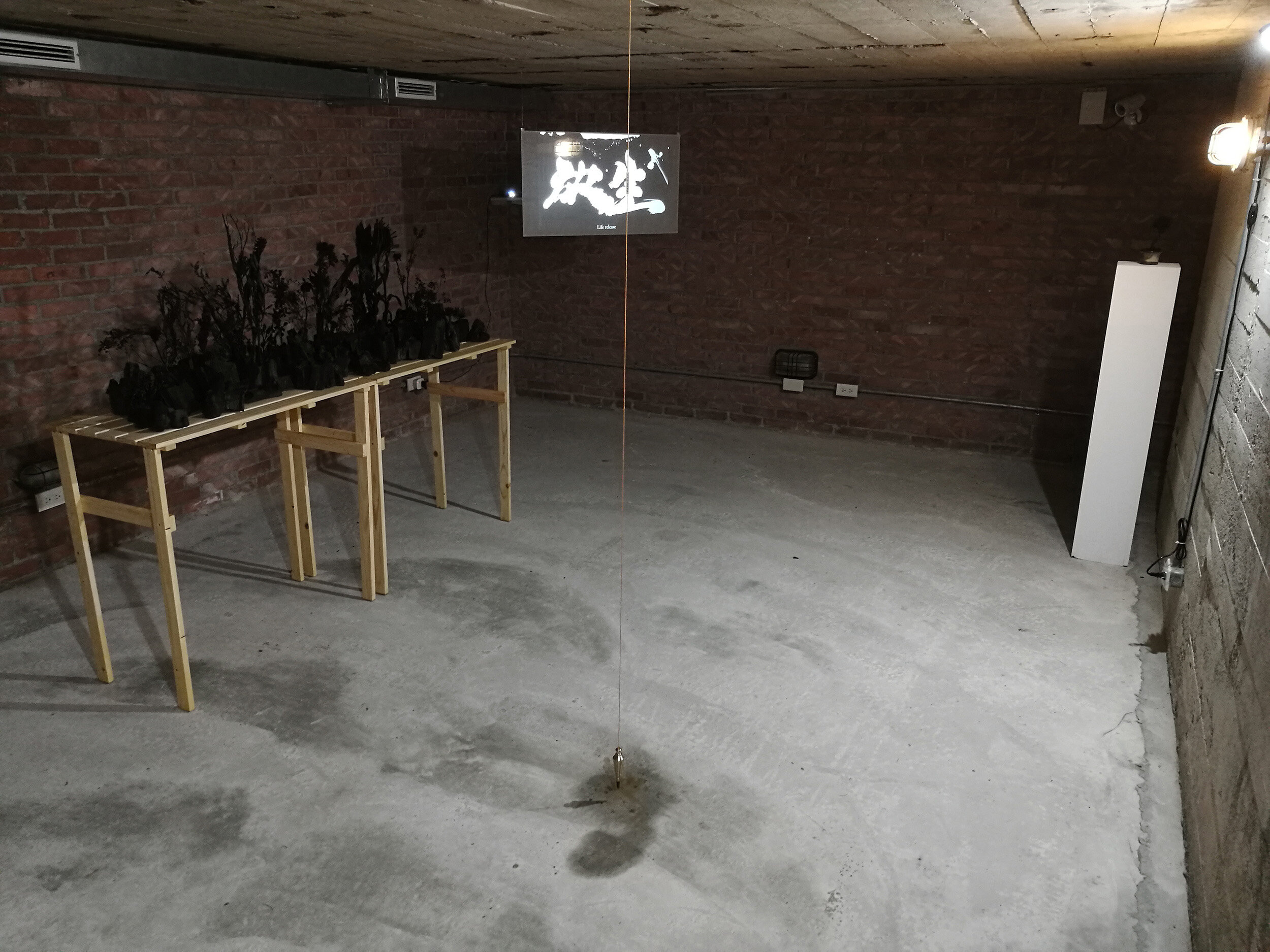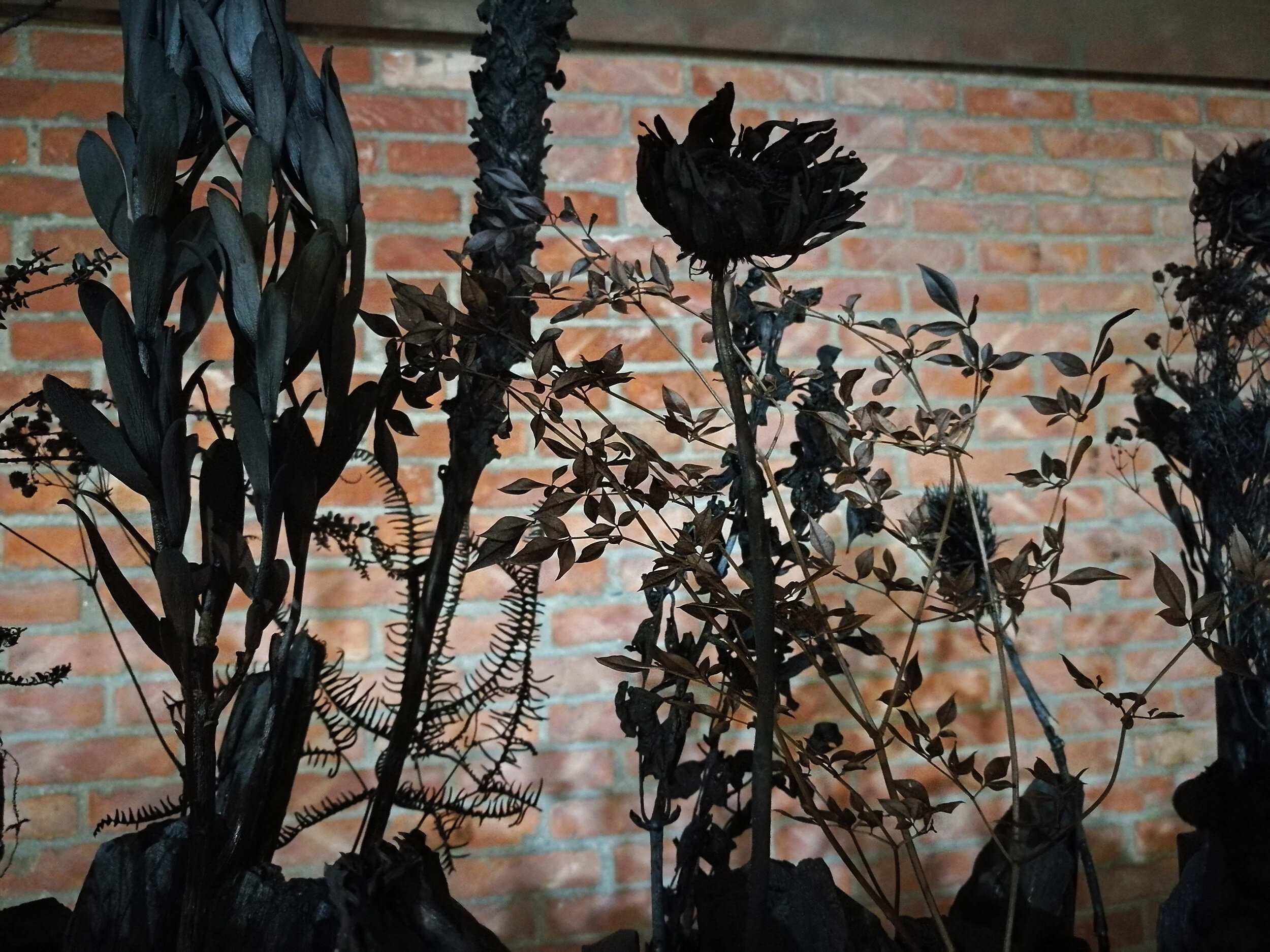Points Center for Contemporary Art (Points) previously held a cross-strait artist exchange residency project in cooperation with Taipei Artists Village | Treasure Hill. Two month’s residency of the artist Zhang Chong in Treasure Hill has officially come to an end.
During the residency, Zhang Chong was interviewed by Zhong Yingying and Maria Dolfini the intern from Italy. The content includes the creation process of the exhibition “Pure Land”. And deeply discuss the historical context behind. The question and answer format present some interviews about the creative concept.
Interviewer: Maria Dolfini, Zhong Yingying (M)
Artist: Zhang Chong(Z)
M: Why did you want to choose the air-raid shelter as your exhibition space? This space is not only special but also inseparable from the history of the Treasure Hill. Is there a special reason?
Z: I prefer the places with stories, but in fact, every room in Treasure Hill is telling its own history, so it can't be said that the air-raid shelter is more historical, and the other is the ordinary exhibition hall. Every space has its own meaning, so I let other artists choose first, and in the end, there left the air-raid shelter and a few small exhibition halls. Then I chose the air-raid shelter.
At that time, I think it was quite interesting to take the air-raid shelter as an exhibition hall. However, the air-raid shelter was stuffy, and the lighting is not good. I also heard that sometimes there will be water leakage under heavy rain. And no holes or screws can be installed, no fires are permitted. Although the conditions quite limited, when I really faced this space, I was still fascinated by it. This space itself is a work.
Before I started to create, I focused on the history of this space, like the artists who had done work in this building before, the structure of the room, the light, the terrain, etc. to determine the theme of the work and material selection for this room.
For example, the terrain of the air-raid shelter is slightly tilted, so I know that if there is a work on fluid, the flow direction can be predicted. And if the water is used, the works that are placed in the path through it cannot be deformed by water, or I may deliberately place the water-deformed work as a sporadic art. This air-raid exhibition took this into account. The trajectory of the water flowing down the ice circumvented all the other exhibits, because the exhibits did not need to be deformed.
On the other hand, the investigation of the architectural structure allows me to know which era of the architectural format is the product, and then there is a history of reference to join the concept of the work. Because the architectural patterns used by different dynasties are different. However, this time the air-raid shelter can be judged from the name as a product of modern times. And there are some more obvious functional directionalities, so I also have a hidden little work related to this feature.
M: You seem to have fully studied the history between Treasure Hill and Taipei. Does the settlement of Treasure Hill have an impact on your work? Are these changes important to you?
Z: Yes, when I was in Shanghai, I asked the project leader for the historical information of the Treasure Hill. I learned that it experienced a period of a large number of religious followers and the Japanese occupation period. After the recovery, it experienced military control and demolition. Later, under the help of various parties and groups in the society, a series of settlement preservation campaigns were promoted.
Up to today, the formation of the settlement of the Treasure Hill Art Village has witnessed the development history of many Taiwanese. So the vicissitude was a presupposed theme that was thought of at the time. And change, replacement is also the theme I have always liked to exhibit.
After taking the vicissitude as the theme, I searched on the Internet for the story of an 80-year-old ice shop in Taipei's Xinfu market. This old ice shop and the Treasure Hill both witnessed the vicissitude of Taipei. As the popularity of refrigeration machines and refrigerators has increased, the ice shop business has become increasingly depressed. As technology advances, the new industry has brought forth the new through the old. So I thought I need to visit the ice shop by the time when I get to Taipei.
Finally, I found an old ice shop near Treasure Hill. The boss was in his 70s and had been doing ice business for more than 60 years. Since the age of nine, he has helped his father run the ice business. Although he is old, the physique is still very strong and looks like just 50 years old. When I ordered the ice, the old man said that he could help me transport the ice to the Treasure Hill Temple every day.
When the ice cubes melt in the exhibition hall and turn into water to infiltrate into the ground, nourish the plants on the Treasure Hill mountains, and make the entire air-raid shelter appear refreshing and cool on a hot summer day, I hope that the audience can feel the old ones that are slowly passing away which has contributed to our lives.
M: Let's return to your exhibition title Pure Land. Returning home is the work of the famous Chinese poet Tao Yuanming (Tao Qian), who is also one of the greatest poets of the Six Dynasties. According to historical sources, Tao decided to resign and retreat when he was an official. He lived in the embrace of nature; most of his poems were presenting the familiar natural scene, so they were also called "idyllic poets." By reading and translating the concept of Tao Yuanming's poetry, what do you want to emphasize in your work? How does Tao's poetry relate to the content of your work?
Z: I think everyone has their own interpretation of the work, so I don't want to emphasize my work in a special place. I hope that the audience can see many aspects of this work, just as everyone has many faces. You can never simply define a person.
When I was a child, I would feel naive when I grow up. But when you grow up, you will start to nostalgic, and miss the toys you have played since childhood, the songs you have heard, and the life you have lived in when you were young. Although "来兮" is considered a modal particle, I think Tao Yuanming is a person who understands this kind of reincarnation. Going back and forth, the world is working like this.
Therefore, Tao Yuanming wants to return to the pastoral life. On the other hand, it can be seen from his "The Peach Blossom Spring" that he is very eager for the mental state of "what is the world, but I don't know if there is a Han, regardless of Wei Jin." Therefore, the purpose of returning to the countryside is to imitate that state and try to withdraw from the official career.
I think this is similar to the practice of Buddhists in order to escape from reincarnation. But even the pastoral will have a reincarnation. Ultimately, it is the spirit, not the flesh, that is truly out of reincarnation, so those who have a true spirit of reincarnation will not care where they live and where they return, because when you want to return, you are already in Reincarnation. It is. But from another point of view, this shows that reincarnation is the premise of retreating from reincarnation. Only reincarnation can temper people, so that we can see many things and make us discover the truth, because only truth can be eternal in the cycle. The meaning of Buddha is great wisdom, that is, truth.
Therefore, only after experiencing and understanding the true meaning of reincarnation can you understand how to easily cross these cycles and live forever. (Note that I have not said that I am not reincarnation here, because the spirit of retreating from reincarnation has transcended reincarnation. This spirit is itself a truth, so there is no need to break away from this because I want to get rid of this idea. It is in the cycle itself.)
M: In the exhibition, one of the devices is a carbonized creeping flower. Can you share with us the material and creative process of this work?
Z: It can be said that my exhibition started on ice and end in fire. When examining the local cultural environment in Taiwan, I found that there are some Buddhist and Taoist-compatible beliefs in Taiwan (like the Longshan Temple, which is preceded by Buddha statues, but there are some Taoist gods behind), this complementarity with the belief of the Southern Anhui region. Whether it is praying for the gods, celebrating the holiday, or using the fire to pay homage to the ancestors. I can also see some believers in the Treasure Hill Temple almost every day to burn the gold paper.
Burning in Buddhism and Taoism is a way of returning to the ancestors and their own spirits or to the gods. Burning incense or passing lotus is one of them. Therefore, I used the concept of borrowing flowers to offer Buddha, putting flowers into the fire, but refining them into charcoal. There is also the concept of nirvana in the fire. Then use the flower arrangement to display it. Because the flower path is derived from the flower for the Buddha.
Taipei has a Jianguo Flower Market on weekends. It is a large-scale plant trading market, where I saw a variety of flowers. This also created the material conditions for my flower arrangement. When the withered flowers become faded into eternal but extremely fragile charcoal, we in turn to have another sense of impermanence and perishment of life, including rebirth.












